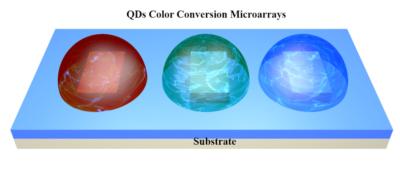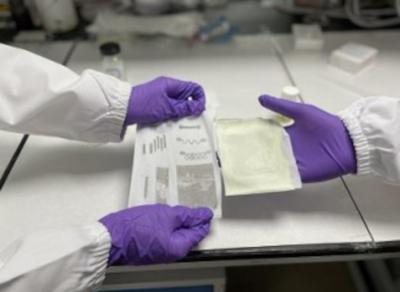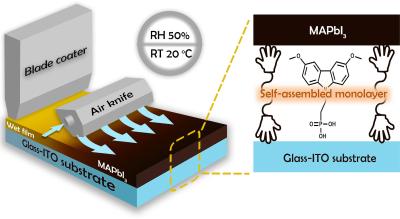Researchers create perovskite quantum dot microarrays for improved displays
Researchers from the Beijing Institute of Technology and MIIT Key Laboratory for Low Dimensional Quantum Structure and Devices have developed perovskite quantum dots microarrays with strong potential for quantum dots color conversion (QDCC) applications, including photonics integration, micro-LEDs, and near-field displays.
QDCC is considered a versatile way to achieve full-color organic light-emitting diodes and micro-light-emitting diodes displays. QDCC provides a wide range of color performance and easy integration. However, conventional QDCC pixels, fabricated by the commonly used method of inkjet printing, tend to be too thin to achieve efficient color conversion. The conventional combination of quantum dots and coffee-ring effects or puddle of particle-laden liquid that occur after evaporation, lowers the light conversion efficiency and emission uniformity in quantum dot microarrays. This also contributes to blue-light leakage or optical crosstalk, where unwanted coupling occurs between signal paths.




